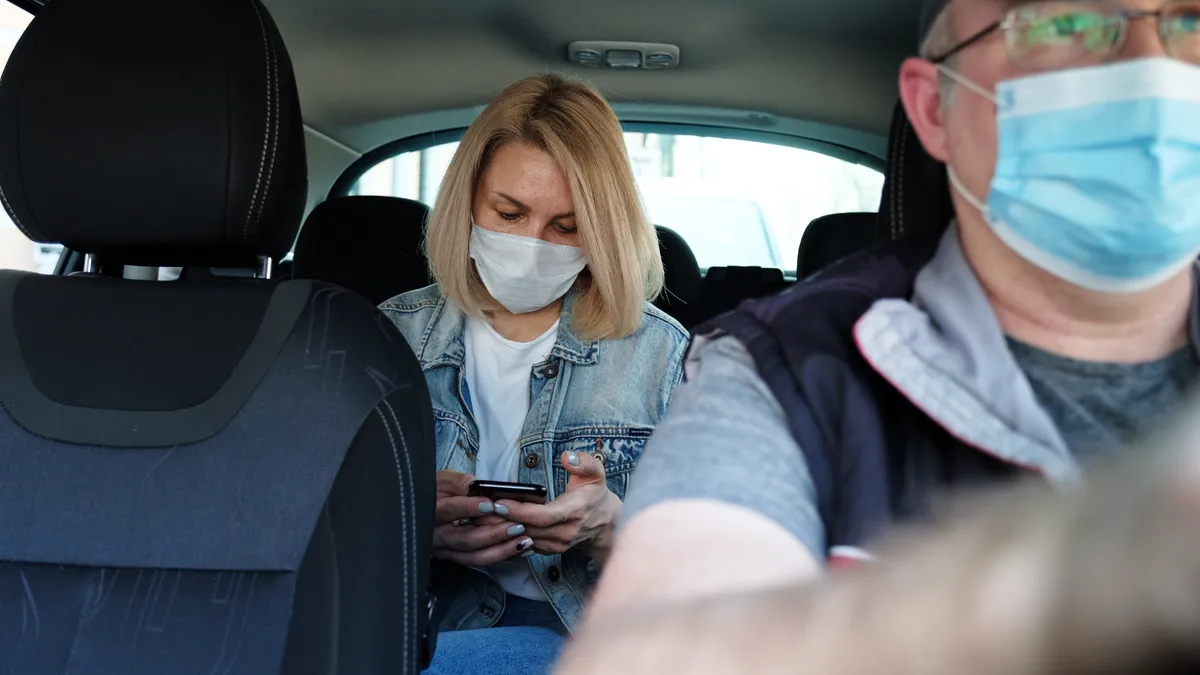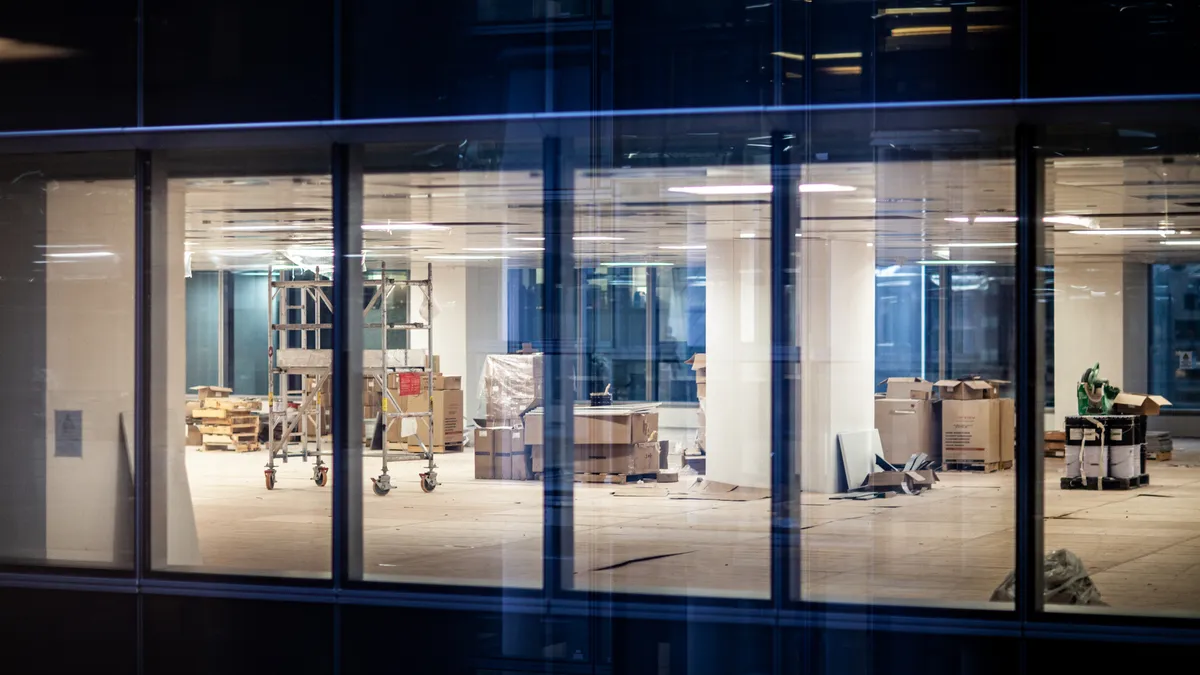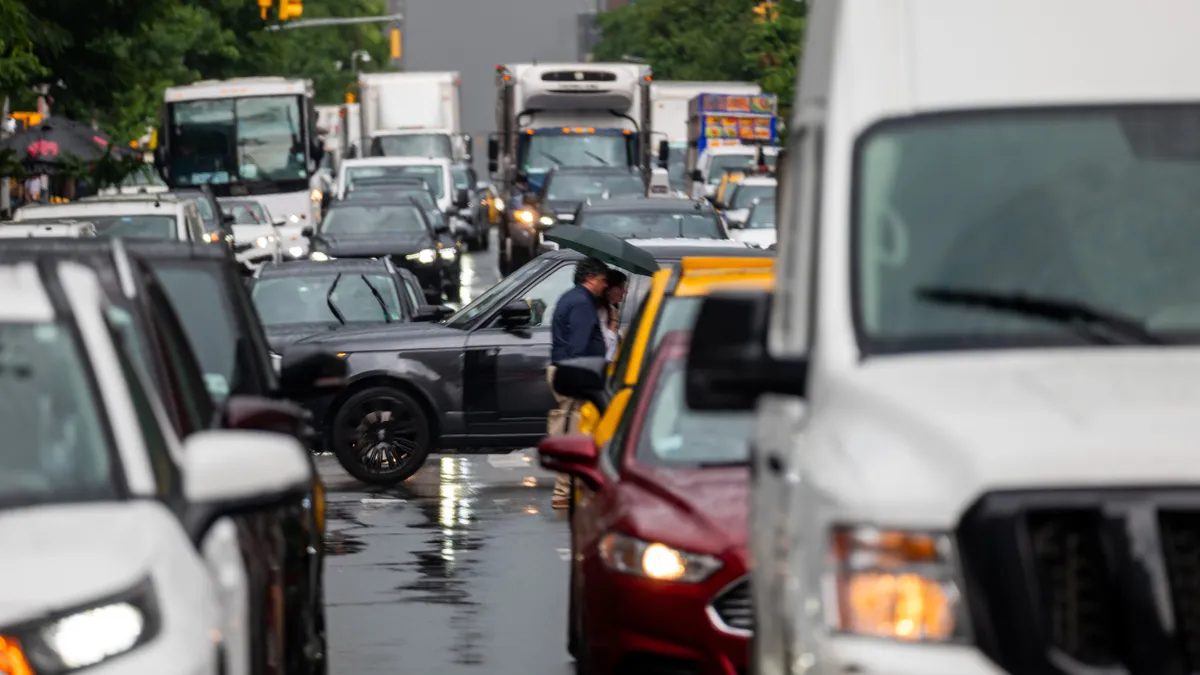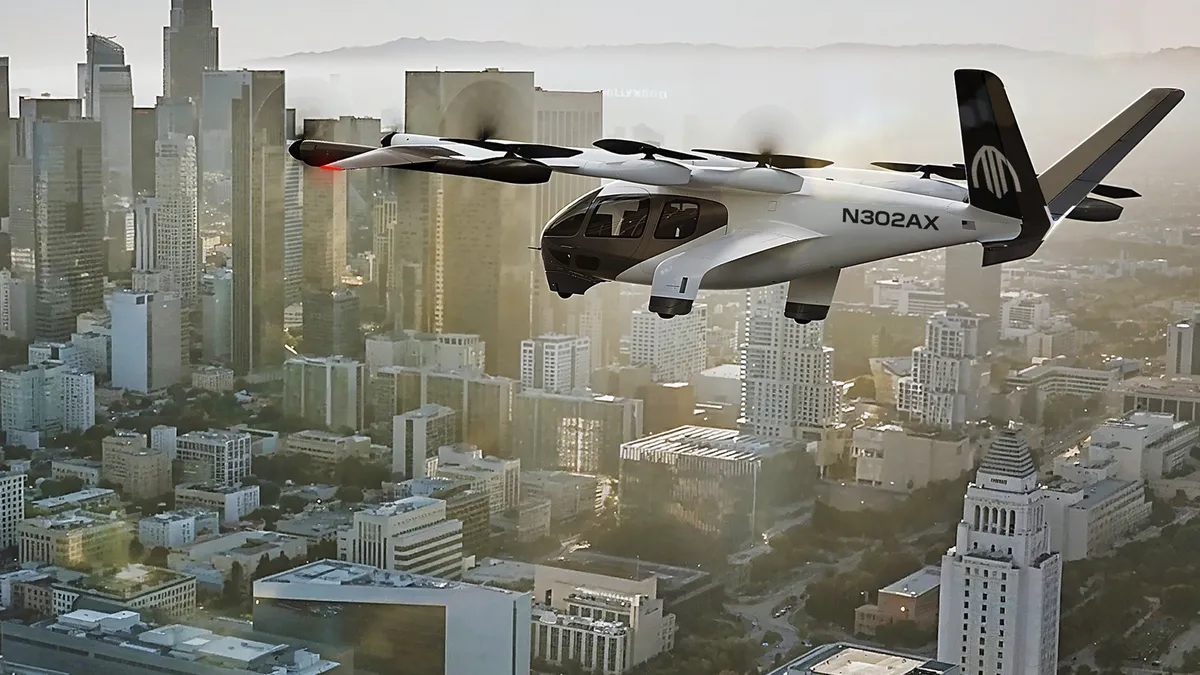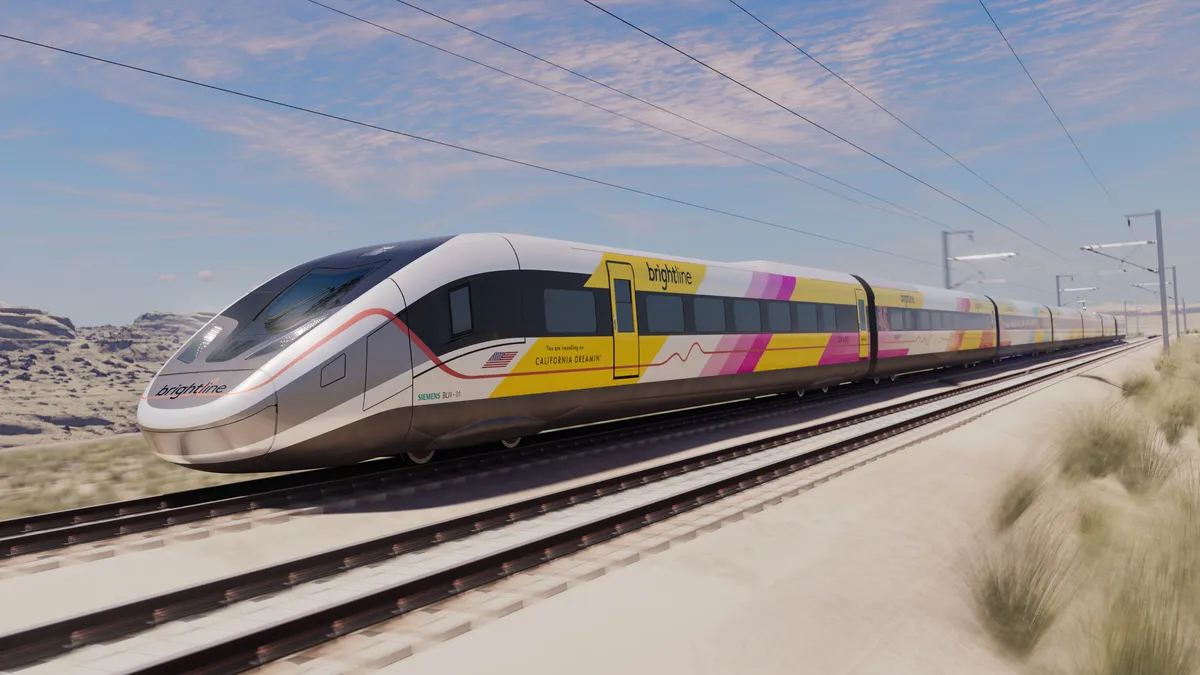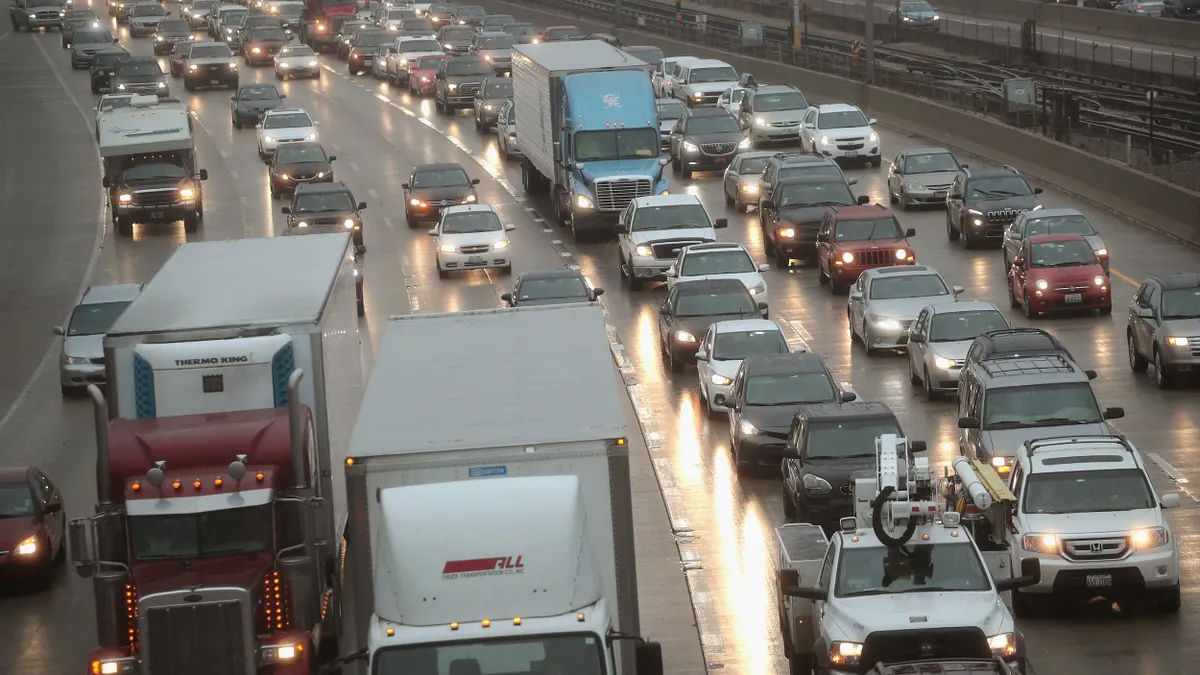Both Uber and Lyft said they can reach profitability by the end of this year, but the ride-hailing giants have differing ideas on how to get there.
On its Q4 2020 earnings call, Lyft officials emphasized their work to deploy autonomous vehicles (AVs) on their network, which they said could revolutionize the sector. Meanwhile, Uber noted the continued growth in their delivery products, suggesting they see it as a crucial part of the company's future as it has divested elsewhere.
The numbers are stark, however. Uber said it had a net loss of $968 million in Q4, while Lyft's net loss in the same period was $458.2 million. Since both companies went public in 2019, they have not turned a quarterly profit.
While both say they can be profitable by year's end, depending on the retreat of the coronavirus pandemic, they showed their differing strategies and a glimpse into their futures.
Lyft looks to AVs
During the company's earnings call this week, Lyft noted the continued year-on-year drop in bookings for its ride-hailing service with rides down 47% in October, 50% in November and 52% in December compared to 2019.
But co-founder and president John Zimmer said AVs are a crucial part of the company's "long-term vision" and will fuel "long-term growth," as Lyft looks to deploy them on its ride-hailing network.
That deployment will be driven by the company's recently announced partnership with Motional, with the pair pledging to launch a multicity robotaxi network in 2023. The companies already partner on a service in Las Vegas, which relaunched in October. While Lyft offered no more concrete details, CEO and Co-Founder Logan Green said they will initially prioritize more temperate cities.
"Certain cities have easier weather," Green said. "They have easier streets and grids to navigate. And we will be targeting kind of the most favorable conditions initially, start where it’s easy and scale up from there."
"We are excited about the transformative impact AVs will ultimately have on our industry and on transportation broadly."

Logan Green
CEO, Lyft
Harry Campbell, founder of blog The Rideshare Guy and author of The Rideshare Guide, said Lyft's strategy of partnering on areas like AVs with other companies could serve it well, especially as it avoids the spending-intensive research and development.
"When you get into the real world of vehicle development and hardware, things like that, you know, it can be very challenging and costly,” he said. "I think that's what Uber saw with their self-driving programs. I've actually always liked Lyft’s partnership strategy in the AV space from the get-go."
The transition won't be easy, Green said, despite the company’s technological expertise. He noted the economics of deploying AVs, and moving towards profitability will require a certain level of utilization.
There will be other roadblocks ahead, the companies acknowledged, including the need to build public trust in AVs and for regulations to be approved. But if everything can come together, Lyft expressed confidence in being a leader on AV deployment. Green said he could not predict the technology's impact on its finances, but said the company is "very bullish that this is going to be an incredibly large part of our business over time."
"We are excited about the transformative impact AVs will ultimately have on our industry and on transportation broadly," Green said.
Uber boosts delivery business
Lyft's strategy contrasts with Uber, which officially closed on the sales of its AV arm to Aurora Innovation and its flying car division to Joby Aviation in a bid to pare down its expenses.
Instead, during the company's Q4 earnings call, CEO Dara Khosrowshahi emphasized its moves into the delivery space through acquisitions of food delivery company Postmates last year, grocery delivery service Cornershop soon after and alcohol delivery startup Drizly earlier this month, among others.
And the financial effects are noticeable. Uber said its delivery services saw a 19% growth in revenue from Q3 to Q4, and a 224% jump year-over-year, while revenue from its mobility services only grew 8%.
"It's become clear that the pandemic has increased consumers' appetite for on-demand delivery of not just food, but all goods, and we take a major step to address this enormous opportunity," Khosrowshahi said, adding that he is "confident" the delivery sector can be profitable this year.
"Wherever you need to go, whatever you need to get, Uber can help."

Dara Khosrowshahi
CEO, Uber
That profitability will be dependent on Uber continuing to add restaurants and other food stores onto its platform, Khosrowshahi said. While deliveries look to be an important part of its business, Uber is not backing away from its traditional ride-hailing services, but rather diversifying in a bid to reach profitability.
"Wherever you need to go, whatever you need to get, Uber can help," Khosrowshahi said. "We believe our highly engaged consumer base on delivery will drive stronger mobility growth as cities reopen. On the flip side, we expect Mobility to become an increasingly powerful acquisition channel for our Delivery business."
Campbell said with Uber moving into new delivery areas like convenience items and products from pharmacies among others, it is clearly moving in the direction of having people use its app as often as possible. That has gotten more difficult with demand for rides down and people only ordering a limited number of meals every day through Uber Eats, but it suggests the company is chasing competitors in the delivery space.
"I think Uber is really just looking to really be the only company that can bundle multiple products into one whereas Instacart is the clear grocery leader, but they don't do food on demand, they don't do rides on demand," Campbell said. "Uber is in kind of a unique position to offer everything in a bundle sort of like Amazon."
Uber is also looking to add to its mobility offerings, while Khosrowshahi said he was hopeful of resuming shared rides post-pandemic. The company has already pitched itself as a way to help support public transit agencies, and has worked directly with the likes of Cincinnati and agencies in Ohio and Kentucky on a variety of partnerships in the past.
"We want to be part of the solution, but it's also a great opportunity for us," Khosrowshahi said.
Still some similarities
Despite their long-term optimism, both companies acknowledged that profitability is still a way off and dependent on how countries dig themselves out from the pandemic. Health concerns may prevent the ride-hailing business from making a full recovery, according to experts.
Both offered similar timelines of when they expect to be profitable. Lyft CFO Brian Roberts said the quick rollout of a COVID-19 vaccine will mean a "significant rebound" in the company's revenue, and it expects stronger demand in the second quarter of 2021. He said the company is "even more confident" of profitability in Q4 this year, or even Q3.
Uber, meanwhile, said they are hopeful of turning a profit by the end of the year. CFO Nelson Chai said the company will "remain on track" for that goal, especially as it executes "strategic transactions." Khosrowshahi was a little more cautious, but said the company has "increased confidence" of breaking even this year.
Both Lyft and Uber have invested heavily to redesign their apps to put all mobility and other options front and center, with a view to keeping customers coming back.
"[We're] adding more categories," Khosrowshahi said of Uber's offering. "And as a result, you will see a super app that is more complete. And then just as important as adding more categories, is that we are adding — we're using machine learning technology to make sure that the choices that we surface to you as either a rider or an eater are the best, most personalized choices."
"We believe the future of transportation is as-a-service, and we are the only company in North America that has a seamless multimodal transportation platform that can replace car ownership," Green said.



